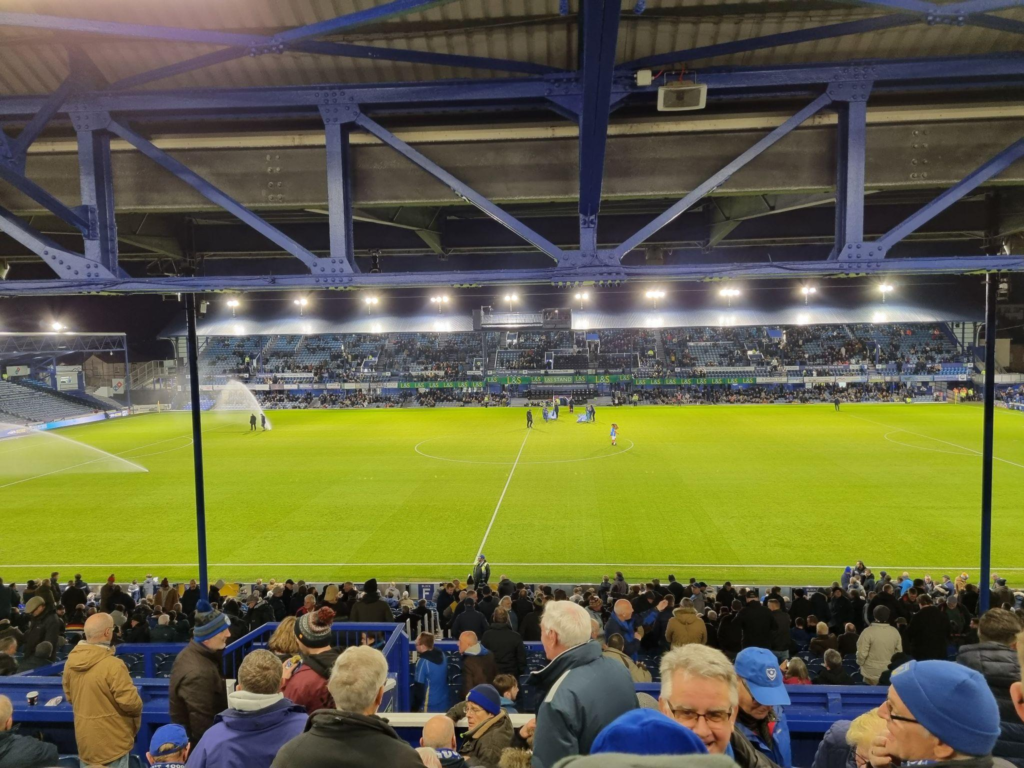The Premier League has some of the biggest stadiums in the world. But there are also a lot of smaller stadiums for teams who have not been in the Premier League before. So does the Premier League have a minimum capacity for stadiums?
Is there a minimum capacity for the Premier League? The Premier League has the same minimum stadium capacity as the football league. The ground must have a certified capacity of at least 5,000 which includes 2,000 seats.

The Premier League has the same stadium rules as any other tier in the football league. It means that the Premier League is under the same minimum stadium capacity rules as the Championship, League One and League Two. As the rules are also about how long a team has been in the football league, the rules for the Premier League are specific.
This is because a team must have already been in the football league to reach the Premier League. So a team in the Premier League has to have a certified capacity of 5,000. Of these 5,000, 2,000 of them have to be seated. It is very rare that this is ever a problem with teams getting into the Premier League.
List of Premier League Stadium Capacities for the 2022-23 season
| Team | Stadium | Capacity |
| Manchester United | Old Trafford | 74,140 |
| Tottenham Hotspur | Tottenham Hotspur Stadium | 62,850 |
| West Ham | London Stadium | 62,500 |
| Arsenal | Emirates Stadium | 60,260 |
| Manchester City | Etihad Stadium | 53,400 |
| Liverpool | Anfield | 53,394 |
| Newcastle United | St James’ Park | 52,305 |
| Aston Villa | Villa Park | 42,657 |
| Chelsea | Stamford Bridge | 41,837 |
| Everton | Goodison Park | 39,572 |
| Leeds United | Elland Road | 37,792 |
| Southampton | St Mary’s Stadium | 32,384 |
| Leicester City | King Power Stadium | 32,262 |
| Brighton & Hove Albion | Falmer Stadium | 31,800 |
| Wolverhampton Wanderers | Molineux Stadium | 31,750 |
| Nottingham Forest | City Ground | 30,332 |
| Crystal Palace | Selhurst Park | 25,486 |
| Fulham | Craven Cottage | 22,384 |
| Brentford | Gtech Community Stadium | 17,250 |
| Bournemouth | Vitality Stadium | 11,364 |
Teams in the top flight of English football tend to have stadium capacities of over 10,000 as they look to take advantage of the huge amount of fans who want to watch Premier League games. This would be a massive loss of revenue if these teams did not have large stadiums for fans to attend the games.
This capacity must also be checked by the Premier League. Stadium safety is very important in English football considering some of the tragedies in the sport’s past. So the minimum capacity that these teams must have also has to be checked by the league before a team can play in the Premier League.
Premier League stadium requirements
The Premier League is the top level of English football and because of that, there are some strict requirements that each stadium in the league has to pass before it can be used.
The main rule is around the capacity of the stadium, which must be at least 5000. Of this 5000, at least 2,000 of this has to be seated capacity. This is rarely a problem for Premier League teams as they usually have stadiums that are much larger than that to make the most of Premier League ticket demand.
The terracing at Premier League stadiums is also under strict regulations due to some issues that English football have had in the past. The terracing needs to be brought up to the standards of the Sports Ground Safety Authority who regulate the safety of all English professional football stadiums.
There are other safety requirements that Premier League stadiums are under because football fans can be out of control at times. They need to have sufficient stewards and security to ensure no issues before, during or after games. Most Premier League stadiums also require a police presence.
As well as capacity and security presence, floodlighting is also crucial for Premier League teams. This is because there are often evening games that require the floodlights to be on. The EFL has an annual test for light levels when the floodlights are on to make sure it is safe to play games at that stadium.
Security as a whole is very important at Premier League stadiums, with all clubs required to have a CCTV surveillance system which is in accordance with the local safety committee.
This also helps Premier League teams deal with any fan trouble that might occur before, during or after games.
The games must also be protected by an external boundary wall. Each stadium needs a boundary wall that prevents intruders from getting in and this wall must be at least 2.2 metres tall throughout the exterior of the stadium.
There is also a lot of new technology that Premier League stadiums are required to have. One of the main ones is the ability for the stadium to have VAR as well as goal-line technology.
When a team is promoted to the Premier League they also have to make sure their media areas are up to standard. There must be positions in the stands for UK TV commentary, overseas TV commentary and radio commentary as well as appropriate positions for cameras and interviews.
The actual press facilities in the stadium have to include 40 seats with desktops for media, which is the same number as the Championship. The Premier League dressing rooms also have a lot of rules around them.
Each Premier League dressing room must be at least 30 sq. metres and it needs to have either six separate shower units or six separate baths. They must also be stocked with a massage table, fridge, tactical board and at least one working power socket.
Championship Stadium Requirements
The requirements for stadiums in the Championship are largely the same as the Premier League and League 1. However they have built in a glide path. The EFL rules (found here) state that a team has up until it’s 4th straight season in the Championship to ensure it has converted all standing terrace capacity to seating.
Stadium requirements for League 1
The stadium requirements for League 1 are actually a lot more similar to the rules around Premier League stadiums than you might think. The minimum capacity is the same as Premier League teams.
Every League 1 team must have a stadium that has a minimum capacity of 5000. This is the same figure as the Premier League, with the difference coming in how many seats the stadium must have. League 1 teams’ stadiums must have a seated capacity of at least 1000 as well as the ability to increase this to 2,000.
As long as the team stays in one of the top four leagues in England, they will need to increase that seating capacity to 2000 by the time of their third season in the EFL. This is rarely an issue for League 1 teams. There are a huge number of other requirements that the stadiums have.
Each League 1 stadium must have terracing that passes safety standards. Each stadium needs to have at least 20 seats for the press and each of these needs to have desktops. There should be CCTV at each stadium as well as an appropriate boundary wall for the protection of the pitch and stadium.
